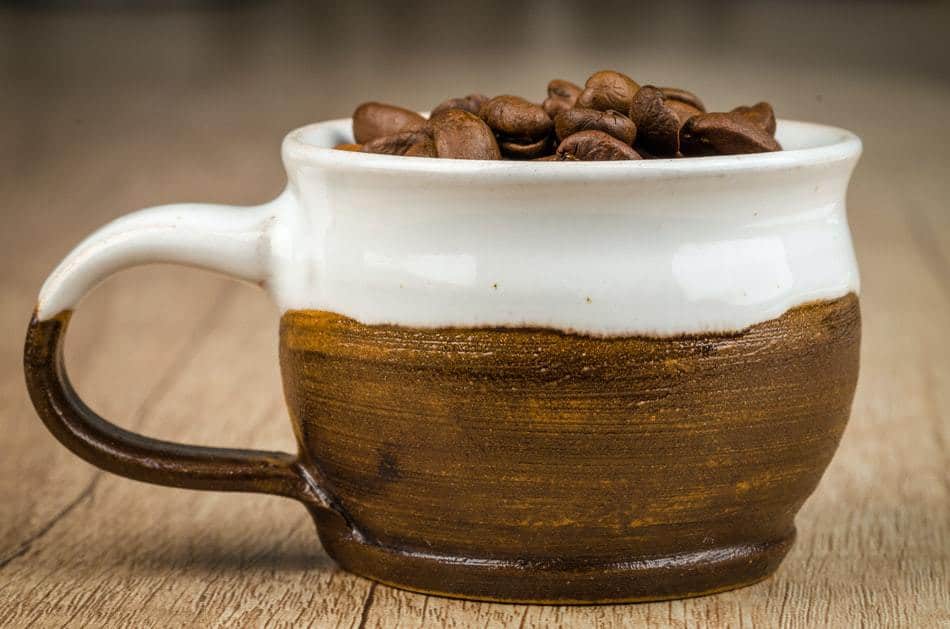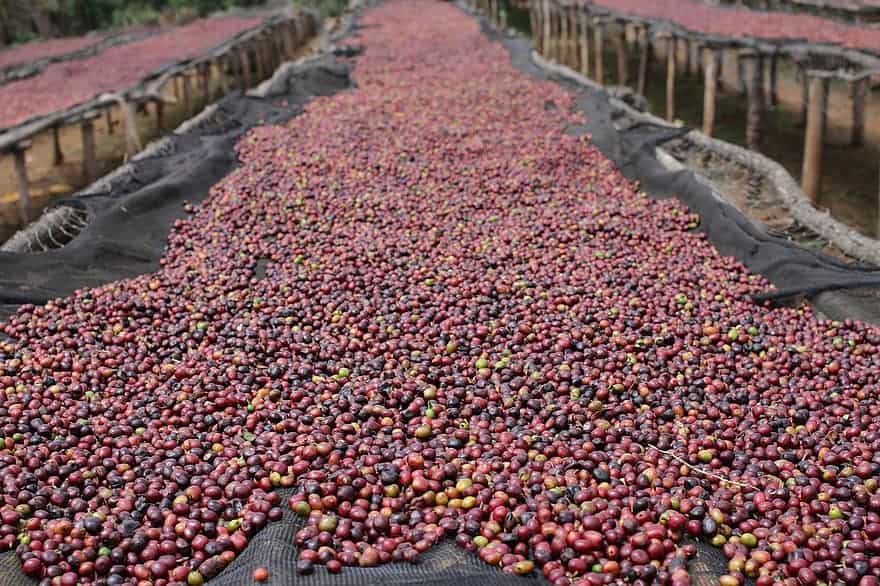The popularity of drinking coffee dates back as far as the early 1900s, but the coffee industry has changed quite a lot—these evolutions were classified as “waves”—since it first became a commodity. Today, most people enjoy the quality and experience they get from consuming specialty coffee (from the era of third-wave coffee).
Specialty Coffee, or “third-wave” coffee, refers to high-quality single-origin coffee graded 80 or higher on the SCA scale with special flavors, such as caramel, citrus, fruity, or even floral (exotic coffees) that co-exist with commercial coffee flavors like cacao, chocolate, and nuts.
Of course, contrary to popular belief, the term “specialty coffee” refers to more than hip coffee shops and fancy beverages. In a nutshell, it describes quality coffee that is made with sustainability and uniqueness in mind. In the remainder of this article, we’ll discuss specialty and third-wave coffee, including what they are and how they differ from previous waves, and what makes people consider specialty coffee “special.” Also, we would briefly go through the different players on the supply chain and how their responsibility with the final cup that the consumers drink.

What is Specialty Coffee?
According to the Specialty Coffee Association of America (SCAA), the term “specialty coffee” was first used by Erna Knutsen of Knutsen Coffee. In a 1978 speech during an international coffee conference in France, Knutsen introduced the principles behind this new coffee culture, explaining that “specialty coffees” are essentially quality, well-prepared beverages made from beans with unique flavor profiles from specific geographic microclimates.
Furthermore, specialty coffees are produced with a high level of care, paying particular attention to the picking, sorting, and shipping process. Even the coffee plant’s microclimate, soil chemistry, cultivation, and processing are carefully inspected and are considered essential components as to what makes coffee taste great.
In other words, “specialty coffee” does not just describe coffee, but the “third-wave coffee” mindset of holding a high standard of coffee production and processing from start to finish.
Waves of Coffee
When experts say “waves” of specialty coffee, they are referring to a specific era of the drink’s development. A new wave is often marked by significant market increases in production based on an increase in consumption. There are, to this date, three known waves within the coffee industry.
The First Wave
The first wave of specialty coffee happened very early in history, right when coffee was first being grown and sold as a commodity. The coffee plant was a valuable trade resource for farmers and quickly became accessible around the world as word of its energy-giving properties spread.
The Second Wave
The second wave of coffee arose once more quality coffee became available, thanks to a new culture of mass production and consumerism. No longer was it just a beverage—it was marketed as a reason to wake up in the morning. People were drinking coffee around the world.
Large companies, such as Starbucks, began opening coffee shops worldwide, revolutionizing the way coffee could be sold, and introducing the idea that it can be a profitable business model.
However, although the coffee industry was quickly taking off, poor farming conditions and the problems that come with over-roasting and the unbalanced distribution of funds lingered for many businesses.
With this in mind, many organizations (such as the International Coffee Organization, formed in 1963) and businesses worked to become more conscious about the entire supply chain. And, as they began to focus on where and how coffee beans were harvested and produced into the delicious drink we know today, consumers started paying attention too.
The Third Wave
The third wave of coffee is considered a “back to the basics” movement, which introduced what we now know as “specialty coffee.”
In 2001, International Coffee Organization (ICO) implemented agreements that encouraged the development of specialty coffee and fair-trade agreements, encouraging ICO members to raise the standard of living and working conditions for coffee workers around the world and develop training programs in niche markets and production sites.
Because of the ICO’s efforts and conscious trading practices, the coffee we see and drink today is known to deliver a flavor profile, unlike what previous generations have experienced.
Direct trade practices ensure that consumers receive pure, delicious coffee with every bag of coffee beans or a cup of joe they purchase—no matter if it is the chocolatey sweetness of Brazilian coffee or the earthy flavor of beans produced in Yemen.
The industry has also become much more localized. Independent roasters can work with single-source beans that are grown to specifications worked out between the roaster and farmer. Together, they can create flavor profiles that best accentuate the bean’s flavor and the style of the roast. In addition, the development of barista training programs popularized the coffee industry as a viable profession for younger generations. Being a barista requires skill, and working at a coffee shop is no longer just a side-gig or a part-time job; it’s become a passionate career choice.
What Makes Specialty Coffee So Special?
Specialty coffee has become a viable challenger to the large corporations that dominated the industry for half a century. As previously mentioned, cities large and small all over the US, coffee shops are becoming more localized. Coffee roasters create exciting new flavors and partner with local businesses to offer their product to a broader audience.
The coffee shop that roasts their coffee is an accessible business. The roaster has more control over the specificities of the origin of their beans. Beans have specific flavor profiles depending on their territory.
Green coffee berries are grown all over the world, predominately from South and Central America, Africa, Asia, and the Caribbean. The climate and conditions of the soil in these areas create a base flavor profile for the beans. The roaster then develops a roasting method specifically for the type of bean that best accentuates the desired flavors.
The care and attention to detail from farmer to roaster, in addition to where the coffee beans are sourced, are, in essence, the main pillars of specialty coffee.

Who are the players in this chain?
There could be several players in the chain, we would describe the most common:
- Farmer (Producer)
- Trader (Exporter/Importer)
- Roaster
- Café/Barista/Shop
Farmer
Responsible for the initial part of the process. There are several types of farmers. The most common classification could be: high production coffee farms, organic coffee farms and small family-owned coffee farms.
For the case of specialty coffee, most of the farmers will fit between organic coffee farms and small family-owned coffee farms. Why? This goes to flexibility and freedom to try and change procedures in order to obtain the best characteristics of the bean.
Small farms will benefit from microclimates more effectively, pick the cherries, and have more control over the drying process.
Trader (Exporter/Importer)
Depending on the final product, trader can have a key role, or less tasks to do. They have the burden of managing the relationship with the farmers (producers), selecting the good and dispose the bad beans from several farms, process the bean (if necessary), packing and shipping the green beans.
They are responsible for accommodating the beans to the best shape possible, that will allow to get the best out of the bean. The better the farmer does his work, the less hast the exporter to do.
One constant role of the traders is the commercialization. They are responsible for promoting the beans they have acquired to the specialty roasters, chains and café owners.
Roaster
The second to last step is here, roasting. The roaster is responsible for preserving the bean quality and getting the best out of the bean by heating the coffee cherry seeds to augment aroma and flavor.
There are many ways to accomplish this. This is why I consider this part an art. As far as my experience, which is very limited, there are many ways to obtain different flavors from the same bean.
Café/Shop/Barista:
This is the last mile, as they say in logistics. The barista should still focus on the preservation of the previously added quality of the bean, but he is also the one that has to reveal the attributes and flavors in the best possible way.
The barista needs to take care of the grinding, blooming, and serving of the drink. And also, if the consumer is interested, he might even have to tell the story of that particular batch, farm or country of origin. Even the cup could have an impact on your coffee experience!
The Specialty Coffee Experience can be fulfilled in several ways, but the two most common would be: going to your café of choice to try or discover a new and unique flavor; or brewing your own coffee at home, your style, your tests your gadgets.
All these players are key to the process that starts on the coffee plant and ends on your specialty coffee cup. All of them should be worried and work towards the quality and preservation of the beans. If one fails, the chain fails. A chain is only as strong as its weakest link.
What to expect when drinking specialty coffee?
A particular experience. That cup of specialty coffee has a story, and that story will allow you to experience the cup in a different way. Considering that there are several players along the chain to get that cup on your hands, each one of those players had an impact on the flavor, so we invite you to ask for the story, while you taste it. The farm, the collector, the drying process, the roasting, the grinding, and finally, the preparation.
Expect flavor. There is an immense variety of flavors across the board from specialty coffee.
Commercial coffee has a bitter taste, joined by regular coffee flavors, such as:
- Cocoa and Chocolate
- Nuts (Almond, coconut, pecan, and hazelnut)
- Vegetable Aromas
Specialty Coffee has a wide variety of flavors and aromas, such as:
- Sweets: sugar cane,
- Citrus: Orange, Tangerine, Lime, Berry
- Fruits: Strawberry
- Floral (exotic coffees)
In case you want the full detail, you can find The Coffee Taster’s Flavor Wheel from the Specialty Coffee Association.
Expect variety. New traders will join the game in a regular basis and contacting with consumers directly. Specialty coffee is definitely going to coffee shops, but also to your home. Getting specialty coffee delivered directly to your door is a few clicks away. Expect uniqueness. Not all coffee cups are created equal.
In Summary
The idea behind Knutsen’s original definition of specialty coffee spanned a good 20 years before her speech in 1978. However, history has seen significant changes in the coffee industry that have adopted different versions of the principles Knutsen first spoke of at the international coffee conference.
In today’s third wave of coffee, you will find Knutsen’s initial thoughts on the coffee industry implemented in every step of the process to produce specialty coffee, from the harvesting of its beans in Brazil to the cup in your hand.
In addition, the third wave focuses efforts on creating a sustainable coffee economy, providing fair living and working conditions for employees worldwide, and developing direct trade relationships with farmers and buyers.
The benefits of specialty, third-wave coffee for the consumer is a better experience overall, from the beverage’s quality to the customer service provided by the shops that sell it. This is all because of the care and attention to detail the entire supply chain is now taking for the popular drink, from how the coffee beans are harvested, to how they’re roasted in artisanal shops.
In short, coffee is tasting better and with a wider variety, and businesses and consumers are feeling better about where and how it’s produced. The drink gets you energized, smiling, and ready to start the morning or an energy boost after lunch. What more could you ask for?

